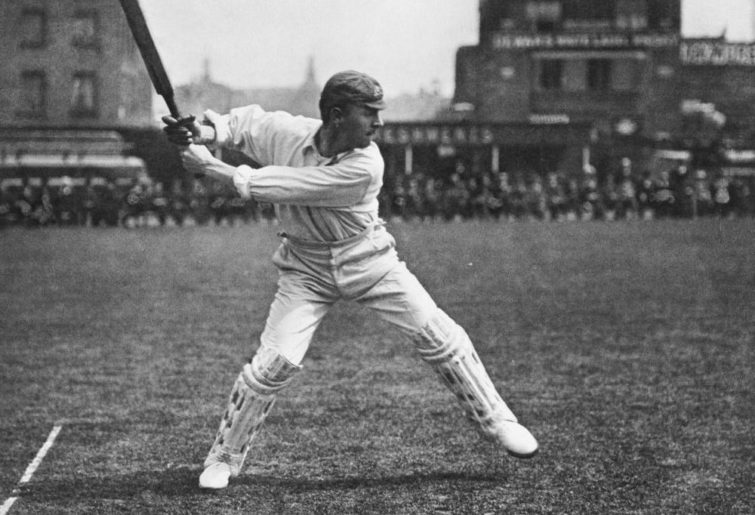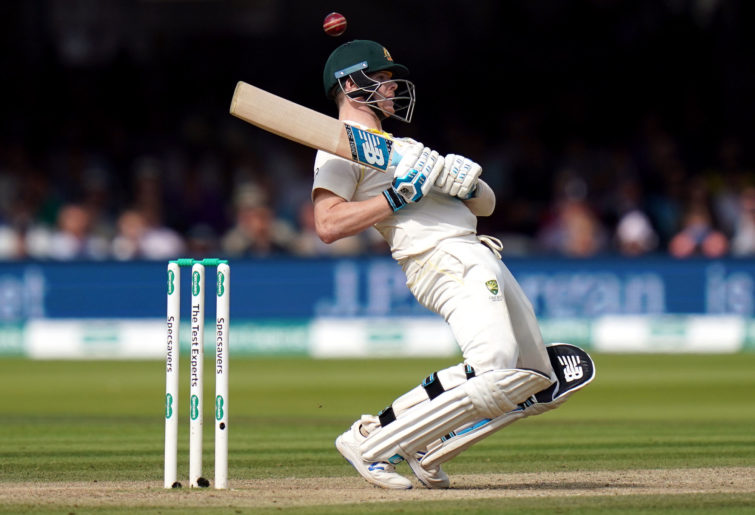I have just finished one of the best cricket books ever, and I’ve read quite a few – not so many in the last 20 years, but an infinite amount in the previous 20 before that.
The book is of course The Genius by fellow Roarer Renato Carini. I believe a number of other Roarers are also in the process of reading it and for the few who have never heard of it, it tells the complete story of Victor Trumper, one of the most beloved Australian cricketers up until at least the time I began following the game at the very start of the 1980s, but who arguably disappeared off the radar of most fans who began after my own time. Now he is making a comeback.
I am not going to talk about Trumper – Renato does enough of that for all of us combined, but it is a seriously enlightening read and I thoroughly recommend it to everybody. What I do want to discuss is a certain theme in the latter chapters that outlines in no uncertain terms the complete folly of bowing down to averages as even the main way, let alone the only way, to rate players among each other.

Victor Trumper (George Bedlam, National Portrait Gallery)
While you can count me among the new converts to Trumper-ism, as a ‘raw average tells very little of the story’ person, on the other hand, I am a veteran of many seasons. I am continually dumbfounded when people put Jacques Kallis up in the same stratosphere as the likes of Brian Lara, Sachin Tendulkar or Ricky Ponting, not to mention pointing to an average of 46 point something to claim that a certain player in the early 1990s was extremely hard done by to lose his Test spot.
Chapters 18 and 19 in The Genius are absolutely brilliant. I am not going to try and relay it all back here in all its finite and to-the-point details, but rather just pick up on one particular idea that really struck a chord with me.
What I am talking about is if we want to quote a single, solitary number to try and rate one batsman over another, then at the very least it should be a number that fuses together not just his average but also his strike rate. Perhaps surprisingly, this is not difficult to do.
Renato’s outstanding idea is to set a par strike rate and for the sake of explanation he suggested a strike rate of 50 runs per 100 balls.
With the computer technology of today, they could easily set a different par for each and every individual batsman based on the mean average over the course of his career, whether completed or still in progress – obviously a career still running, the par for the individual will be constantly changing, literally every time a ball is delivered in any Test match anywhere on the planet.
For example, Marnus Labuschagne’s par will be the worldwide mean since his 2018 debut, whereas Steve Smith’s will be the worldwide mean stretching back some 11 years. Michael Clarke’s will be the worldwide mean from September 2004 until August 2015 with Ponting’s being from December 1995 until December 2012.

(John Walton/PA Images via Getty Images)
For simplicity, I am going to compare a relatively small sample of some of the leading players using this fusion method, mainly modern players simply because we have less accurate knowledge of strike rates for most pre-1980 players. We do have Don Bradman’s and his fusion comes out at nigh on 122.
It works like this: if 50 runs per 100 balls is considered par, then you simply multiply the average runs per innings, in Bradman’s case 99.94, by the percentage as a decimal fraction the strike rate is above par, in Bradman’s case 61 (runs per 100 balls) is above par by 1.22. Therefore, Bradman’s fusion is 99.94 x 1.22.
As already outlined, modern technology would easily allow a tailored par for each and every individual batsman, but it’s not going to make much difference in terms of players’ rankings as to who is above and below any other.
I believe 50 to be a fairly sound par for the sake of explanation in any case. Let’s face it, if every team scores at three runs per over, that is 270 runs off the bat in every full day’s play, adding on an extra five per cent or so for extras and that is 285 for the day. If that happens every single day of every Test, there aren’t going to be too many draws and the spectators will get their money’s worth.
So anyway, Virenda Sehwag (49.3 x 1.644) has a fusion of 81.05, while Adam Gilchrist’s is 78.06. Steve Smith does very well with 68.1, narrowly ahead of Viv Richards 67.3. Tendulkar comes in at around 65, while Lara and Ponting are 64 and 61 over their entire careers. Matthew Hayden was 60.94 and Virat Kohli is currently 59, while Jacques Kallis is only just above 50 at 50.97.

(James Knowler/Getty Images)
There is little to be gained by overdoing the number of players cited here, as a long table could easily be done up, nor is such a rating the be all and end all, as it does not account for things such as strength of opposition attack, pitch conditions or state of the match and series. However, it does give a much more accurate rating for player impact than mere average runs per dismissal, both for their own team’s fortunes as well as the intimidation factor on the opposition.
As Renato points out in his book, there is no more value in averaging 100 at a strike rate of 20 then there is in averaging 20 at a strike rate of 100, when talking about specialist batsmen of course. If we, as armchair experts, are going to champion one batsman over another, at least give scoring speed equal importance to runs scored per dismissal.
To finish off, Victor Trumper is about 54, which while considerably more flattering than his average of 39 runs per innings, it also does not account for the way he completely shunned soft and meaningless runs in certain situations or any of the other attributes that made him so special.
Dean Jones, who famously said he would not include Trumper in an all-time team because he could not even average 40, is himself only 45.5. However, if you omit two of his four dead-rubber hundreds, 216 in Adelaide early 1989 and his unbeaten 150 three years later, his fusion rating drops to 40.3.































































































